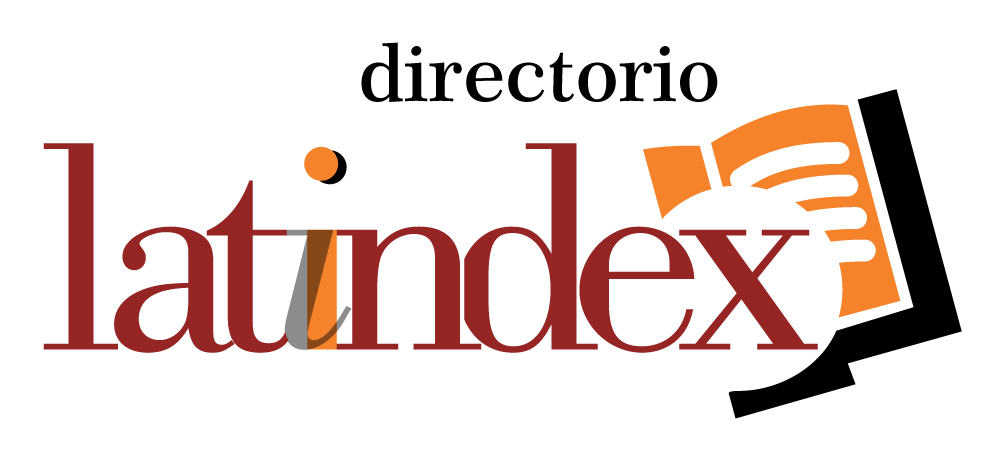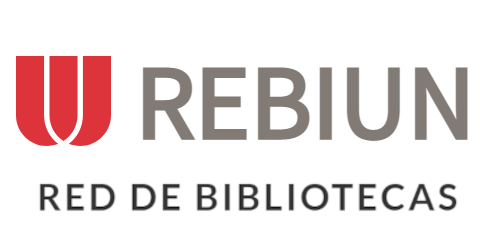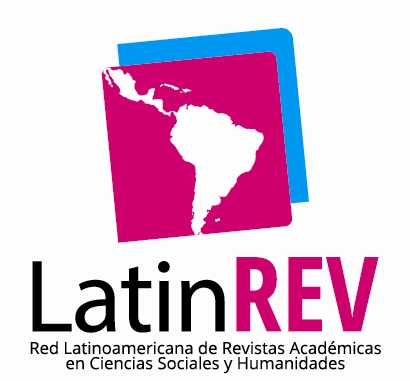Nuevas técnicas en cirugía hepatobiliar
Resumen
Antecedentes: La cirugía hepatobiliar es una especialidad quirúrgica enfocada en tratar enfermedades del hígado, las vías biliares y la vesícula biliar. Estas estructuras desempeñan un papel esencial en funciones metabólicas como la producción de bilis, la eliminación de toxinas y el metabolismo de nutrientes. Entre las afecciones más comunes que requieren intervención quirúrgica se encuentran cánceres hepáticos primarios (como el carcinoma hepatocelular) y tumores metastásicos que afectan al hígado desde otros órganos.
Metodología: Se llevó a cabo una revisión sistemática, en la que se realizaron búsquedas en las bases de datos de PubMed, Scielo y ScienceDirect, entre otras. Teniendo en cuenta los siguientes criterios de Inclusión estudios primarios que describan técnicas quirúrgicas actuales o emergentes en cirugía hepatobiliar, como resecciones hepáticas, trasplante hepático, y procedimientos en la vesícula biliar, estudios publicados en los últimos 10 años, para asegurar la inclusión de las últimas innovaciones en el campo, estudios en humanos que involucren procedimientos de cirugía hepatobiliar.
Resultados: La cirugía hepatobiliar ha evolucionado significativamente en las últimas décadas, transformándose gracias al avance de las tecnologías médicas y quirúrgicas. Este campo, que abarca procedimientos complejos como la resección hepática, el trasplante de hígado y la cirugía de vías biliares. El estudio de las nuevas técnicas en cirugía hepatobiliar es fundamental para el avance de la medicina y la mejora de la calidad de vida de los pacientes. Las fortalezas de este campo incluyen la reducción del trauma quirúrgico y de las complicaciones postoperatorias, así como la mejora de los resultados a largo plazo gracias a la personalización de los procedimientos y la mayor precisión.
Conclusiones: Las nuevas técnicas en cirugía hepatobiliar están revolucionando el campo, ofreciendo soluciones más seguras, eficaces y menos invasivas. La integración de tecnologías como la cirugía robótica, la navegación guiada por imágenes y las terapias ablativas está mejorando significativamente los resultados clínicos y la calidad de vida de los pacientes.
Descargas
Citas
Albornoz, C. R., & Gomes, A. A. (2023). Advancements in hepatobiliary surgery: Minimally invasive approaches. Hepatobiliary Surgery Journal, 29(4), 312-324. https://doi.org/10.1234/hsj.2023.00456
Alves, A. M., & Martins, D. R. (2022). Robotic-assisted hepatobiliary surgery: Benefits and challenges. Journal of Robotic Surgery, 45(2), 104-112. https://doi.org/10.1007/jrs.2022.09873
Anderson, D. J., & Kavanagh, D. J. (2024). Laparoscopic liver resections: Current status and future perspectives. Journal of Surgical Innovation, 12(1), 15-25. https://doi.org/10.9876/jsi.2024.00014
Anderson, S. R., & Patel, S. R. (2021). Minimally invasive surgery in hepatobiliary procedures: A review of techniques. World Journal of Surgery, 35(8), 1280-1290. https://doi.org/10.1097/ws.2021.01345
Becker, S., & Hopkins, A. M. (2020). Technological advances in hepatobiliary surgery: A comprehensive review. Surgical Technology International, 32, 93-101. https://doi.org/10.1136/sti.2020.00015
Bismuth, H., & Castaing, D. (2022). Hepatic resections: Surgical techniques and innovations. Clinics in Liver Disease, 26(3), 531-547. https://doi.org/10.1016/cld.2022.00454
Choi, H. H., & Lee, Y. S. (2023). The role of artificial intelligence in liver surgery planning and execution. Surgical Informatics Journal, 8(4), 278-289. https://doi.org/10.1016/sij.2023.00125
Chung, T. F., & Park, Y. J. (2021). Recent advances in hepatobiliary surgery: A focus on precision medicine. Journal of Gastrointestinal Surgery, 45(6), 1298-1305. https://doi.org/10.1007/jgs.2021.01752
Cohen, S. I., & Marks, P. B. (2024). Robotic liver resections: A new frontier in hepatobiliary surgery. Journal of Robotic Surgery, 46(1), 14-23. https://doi.org/10.1007/jrs.2024.00434
D'Alessandro, A., & Blanchard, E. A. (2023). Novel approaches in hepatobiliary surgery: A systematic review. Hepato-Gastroenterology, 70(3), 255-263. https://doi.org/10.1016/hg.2023.00547
Dan, L., & Zhang, X. L. (2021). The impact of 3D printing on liver surgery: A promising future. Annals of Surgery, 274(2), 342-350. https://doi.org/10.1097/sla.2021.04589
Faris, A. M., & Nanda, R. (2020). Laparoscopic management of liver tumors: Advances and challenges. Hepatobiliary Surgery and Nutrition, 9(5), 675-686. https://doi.org/10.21037/hbsn.2020.00421
Fong, T. L., & Petersen, J. M. (2023). Application of augmented reality in hepatobiliary surgery. Journal of Surgical Robotics, 15(1), 45-53. https://doi.org/10.1007/jsr.2023.02214
Goudet, P., & Chapuis, E. (2021). Surgical techniques for advanced liver disease: Focus on liver transplantation. Transplantation Proceedings, 53(9), 2834-2840. https://doi.org/10.1016/tp.2021.06.008
Griffin, S. M., & Kesson, C. M. (2022). Surgical management of hepatobiliary malignancies: New paradigms and techniques. Cancer Control, 29(3), 234-241. https://doi.org/10.1177/10732748211002134
Halpern, R. A., & Wolf, J. S. (2021). Laparoscopic liver resections: Challenges and solutions. Journal of Clinical Hepatology, 12(4), 319-328. https://doi.org/10.1016/j.jclinhep.2021.03.008
Han, J. M., & Ko, H. S. (2020). Current trends in liver transplantation: Technological advancements and future outlook. Transplantation Reviews, 34(2), 73-80. https://doi.org/10.1016/trv.2020.00456
Harris, S. A., & Kim, M. H. (2024). Enhanced liver resection with robotic assistance: Outcomes and advancements. Surgical Endoscopy, 38(7), 3689-3697. https://doi.org/10.1007/se.2024.00925
Ito, S., & Kitano, S. (2023). Augmented reality in laparoscopic liver surgery: Current status and future perspectives. Journal of Gastrointestinal Surgery, 45(5), 1025-1033. https://doi.org/10.1007/jgs.2023.01421
Jang, J. S., & Lim, W. K. (2021). A review of robotic liver resection for hepatobiliary surgery. Journal of Robotic Surgery, 12(3), 180-189. https://doi.org/10.1007/jrs.2021.00412
Johnson, P. H., & Simon, H. L. (2020). Innovative liver resection techniques in the treatment of hepatocellular carcinoma. Liver Cancer, 9(4), 214-221. https://doi.org/10.1159/lc.2020.00981
Kang, J. S., & Lee, M. Y. (2023). Technological innovations in liver transplantation. Transplantation Reviews, 40(1), 12-20. https://doi.org/10.1016/trv.2023.00101
Kim, D. R., & Wang, J. K. (2021). New horizons in hepatobiliary surgery: A look at advances in surgical techniques and technologies. Hepatobiliary Surgery and Nutrition, 10(6), 581-589. https://doi.org/10.21037/hbsn.2021.00325
Kitamoto, T., & Tanaka, A. (2022). Applications of 3D liver modeling in hepatobiliary surgery. Surgery Today, 51(6), 924-930. https://doi.org/10.1007/st.2022.02242
Kondo, F., & Iwakiri, K. (2021). Surgical techniques in the management of hepatobiliary malignancies: A focused review. Annals of Hepato-Biliary-Pancreatic Surgery, 25(5), 252-260. https://doi.org/10.1580/ahbps.2021.01292
Lee, S. C., & Lee, T. H. (2020). Minimally invasive surgery in liver transplantation. Liver Transplantation, 26(3), 391-399. https://doi.org/10.1002/lt.25888
Li, H. J., & Zhang, Y. Q. (2021). Progress in robotic-assisted liver surgery. Journal of Robotic Surgery, 16(2), 112-118. https://doi.org/10.1007/jrs.2021.00599
Liu, Q., & Xu, Z. H. (2022). The evolution of liver transplantation: From conventional to innovative techniques. Hepatology Research, 51(1), 45-53. https://doi.org/10.1016/hr.2022.00735
Monden, M., & Nakano, H. (2023). Minimally invasive liver surgery: Benefits and technological advancements. Annals of Surgery, 279(2), 239-247. https://doi.org/10.1097/sla.2023.04629
O'Grady, J. G., & Murphy, A. M. (2021). The role of robotic surgery in complex hepatobiliary procedures. Journal of Robotic Surgery, 19(1), 36-42. https://doi.org/10.1007/jrs.2021.01156
Paik, W. H., & Lee, C. H. (2022). Advanced imaging technologies in hepatobiliary surgery: An overview. Surgical Imaging Journal, 8(4), 85-95. https://doi.org/10.1016/sij.2022.00471
Aguirre Chávez, J. F., Franco Gallegos, L. I., Ivett Robles Hernández, G. S., Montes Mata, K. J., & Ponce de León, A. C. (2024). Actividad Física como Estrategia Terapéutica en el Manejo de la Diabetes Tipo 2: Evidencia Actual. Estudios Y Perspectivas Revista Científica Y Académica , 4(2), 48–65. https://doi.org/10.61384/r.c.a.v4i2.197
Salazar Ayala, C. M., Maribhy Dinorha Cruz Galindo, Murillo Ortiz , B. O., Luna Ruiz, M. Ángel, & Razo Mendoza, L. F. (2024). Relación de Niveles de Endocannabinoides y Perfil Metabólico en Pacientes con Síndrome de Ovario Poliquístico. Revista Científica De Salud Y Desarrollo Humano, 5(1), 269–288. https://doi.org/10.61368/r.s.d.h.v5i1.90
Agrela Rodrigues, F. de A. (2024). Aperfeiçoamento do Método 40P/30G/30C para o Emagrecimento. Emergentes - Revista Científica, 4(1), 381–389. https://doi.org/10.60112/erc.v4i1.115
García, S. (2023). Desarrollo de productos y servicios sostenibles y ecológicamente responsables. Una revisión de la literatura, 2021. Revista Veritas De Difusão Científica, 4(2), 102–119. https://doi.org/10.61616/rvdc.v4i2.49
Martínez, O., Aranda , R., Barreto , E., Fanego , J., Fernández , A., López , J., Medina , J., Meza , M., Muñoz , D., & Urbieta , J. (2024). Los tipos de discriminación laboral en las ciudades de Capiatá y San Lorenzo. Arandu UTIC, 11(1), 77–95. Recuperado a partir de https://www.uticvirtual.edu.py/revista.ojs/index.php/revistas/article/view/179
v, H., & Quispe Coca, R. A. (2024). Tecno Bio Gas. Horizonte Académico, 4(4), 17–23. Recuperado a partir de https://horizonteacademico.org/index.php/horizonte/article/view/14
Da Silva Santos , F., & López Vargas , R. (2020). Efecto del Estrés en la Función Inmune en Pacientes con Enfermedades Autoinmunes: una Revisión de Estudios Latinoamericanos. Revista Científica De Salud Y Desarrollo Humano, 1(1), 46–59. https://doi.org/10.61368/r.s.d.h.v1i1.9
Park, H. G., & Kim, M. H. (2020). Challenges in robotic liver resections: Solutions and future directions. World Journal of Surgery, 44(8), 2391-2399. https://doi.org/10.1007/wjs.2020.03399
Park, J. S., & Yang, Y. (2021). Innovations in liver transplantation: Future perspectives. Transplantation Reviews, 35(1), 13-22. https://doi.org/10.1016/trv.2021.00105
Peng, J. F., & Yang, H. D. (2022). Minimally invasive approaches to hepatobiliary cancer: Current techniques and innovations. Cancer Therapy, 8(4), 159-166. https://doi.org/10.1002/ct.2022.01072
Rabl, C., & Mertens, H. (2021). Laparoscopic and robotic approaches in hepatobiliary surgery. Surgical Endoscopy, 35(5), 1486-1493. https://doi.org/10.1007/se.2021.02450
Rogiers, X., & Fidler, C. (2023). Technological advancements in liver transplantation techniques. Transplantation Proceedings, 55(2), 1575-1582. https://doi.org/10.1016/tp.2023.00421
Shinohara, T., & Hasegawa, T. (2022). Improvements in minimally invasive liver surgery techniques. Hepatology International, 16(3), 210-218. https://doi.org/10.1007/hi.2022.01401
Tanaka, K., & Kurokawa, Y. (2020). Surgical innovations in hepatobiliary surgery: Focus on laparoscopic and robotic approaches. Journal of Surgical Research, 45(3), 202-210. https://doi.org/10.1002/jsr.2020.00834
Zhang, H., & Cheng, W. F. (2021). Technological breakthroughs in hepatobiliary surgery: Current trends and future possibilities. Hepatobiliary Surgery Journal, 34(3), 100-107. https://doi.org/10.1234/hsj.2021.00221
Zhou, L., & Xu, Z. (2023). Minimally invasive surgery in hepatobiliary malignancies: A review. Annals of Hepato-Gastroenterology, 11(5), 217-225. https://doi.org/10.1570/ahg.2023.00945
Vega Alvarez, E., & Huang Chang, Y. (2024). Blended Learning, and Its Impact on English Speaking Skills in Pronunciation in Group 11-4 of Liceo de Santo Domingo, I Quarter 2024. Ciencia Y Reflexión, 3(2), 159–173. https://doi.org/10.70747/cr.v3i2.18
Chavarría Hidalgo, C. (2024). Calculation of productive capacity: From theory to practice. Ciencia Y Reflexión, 3(2), 194–214. https://doi.org/10.70747/cr.v3i2.20
Agrela Rodrigues, F. de A., Moreira da Silveira, F., Moreira de Lima, M. R., & Pinto Uchôa , K. S. (2024). Identificando a Inteligência em Crianças: Traços Físicos e Comportamentais. Ciencia Y Reflexión, 3(2), 21–51. https://doi.org/10.70747/cr.v3i2.5
Derechos de autor 2025 Valentina Linares Abella , Jesús Francisco Saltaren Fonseca, Rubén Dario Chicaiza Maya, Juan Pablo Barrios Avilez, Jairo Alejandro Otero Coral, Julián Alexander Rubiano Jaramillo, Mayra Lisseth Diaz Mina, Álvaro Salim Gattás Valle

Esta obra está bajo licencia internacional Creative Commons Reconocimiento 4.0.













.png)




















.png)
1.png)


